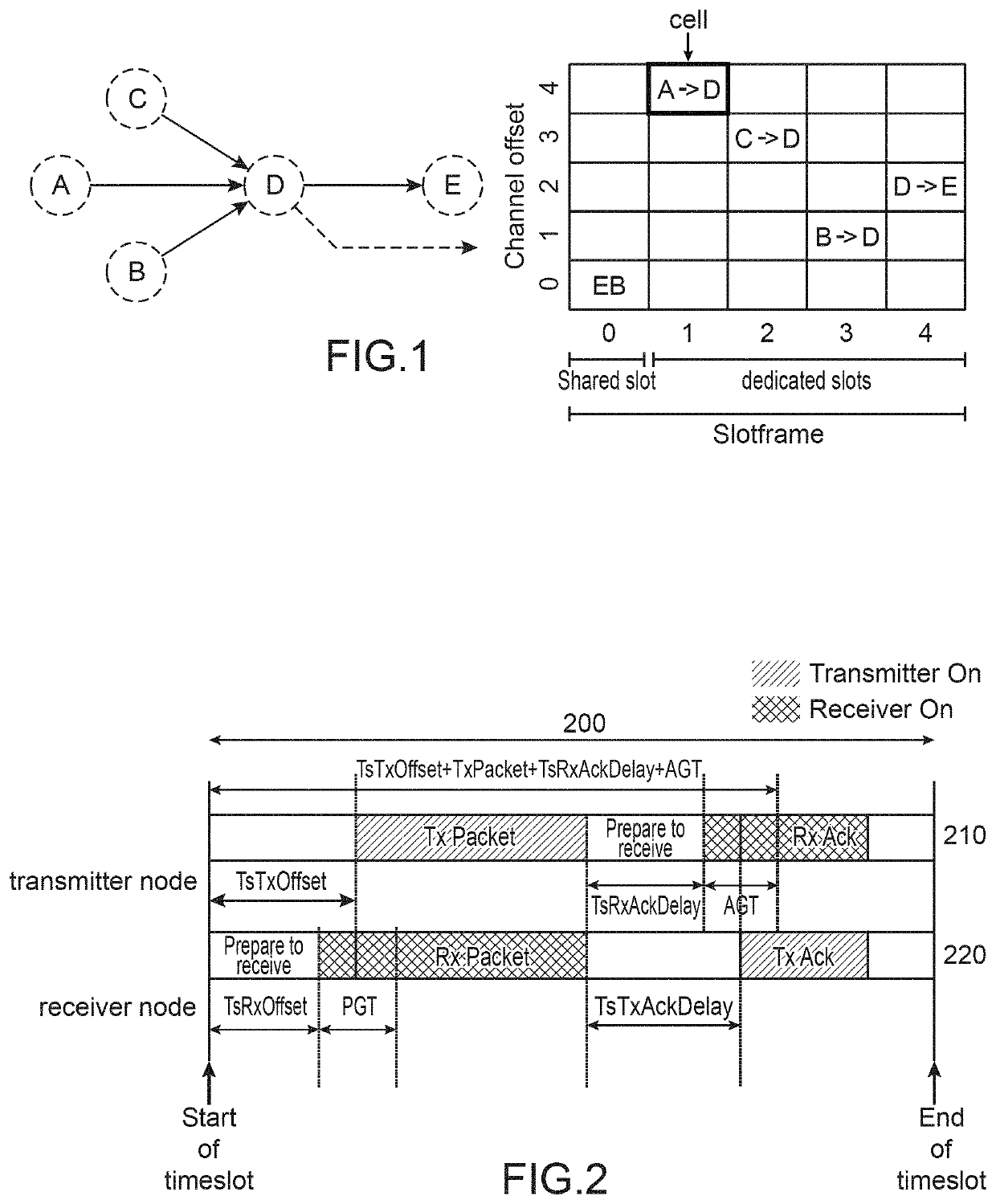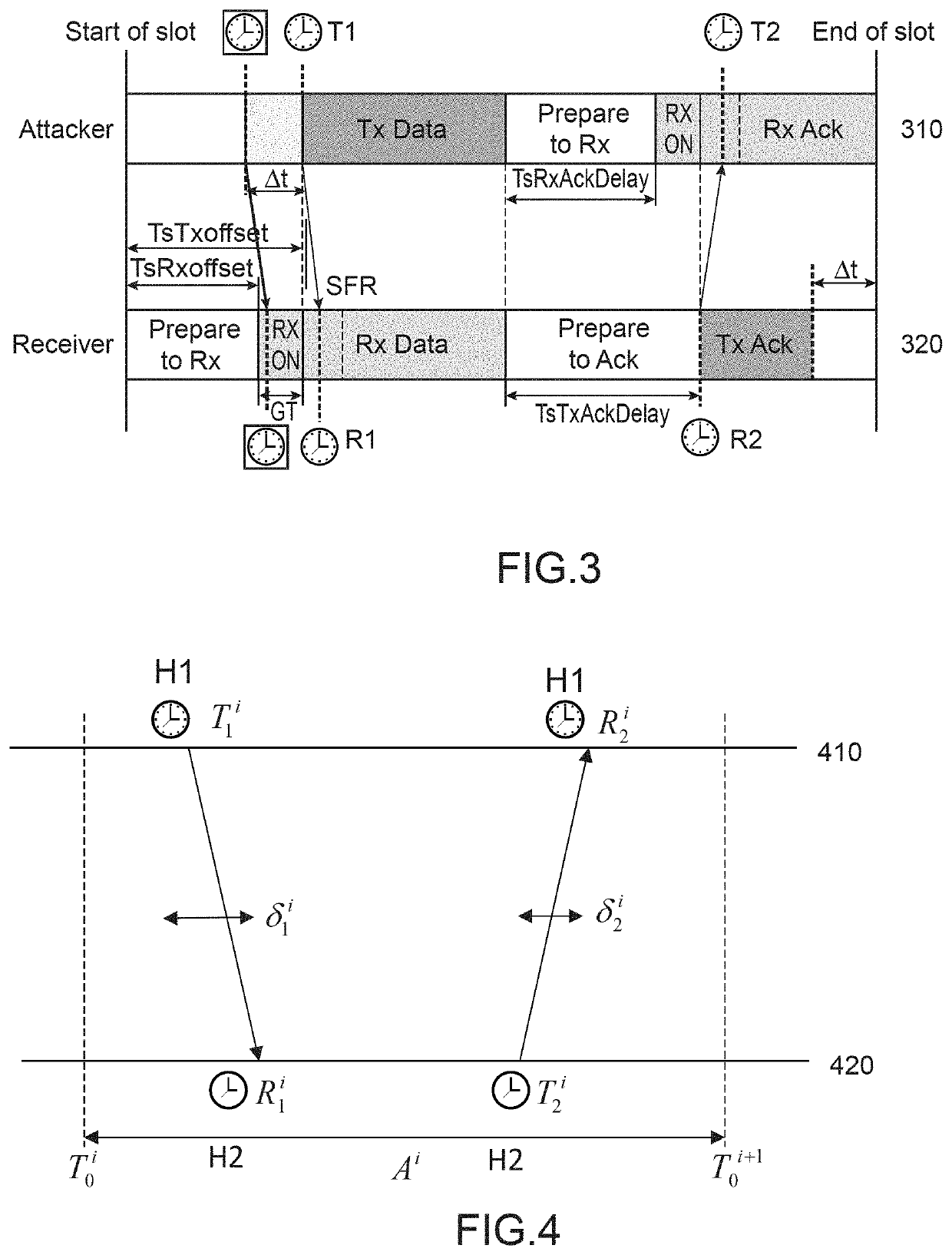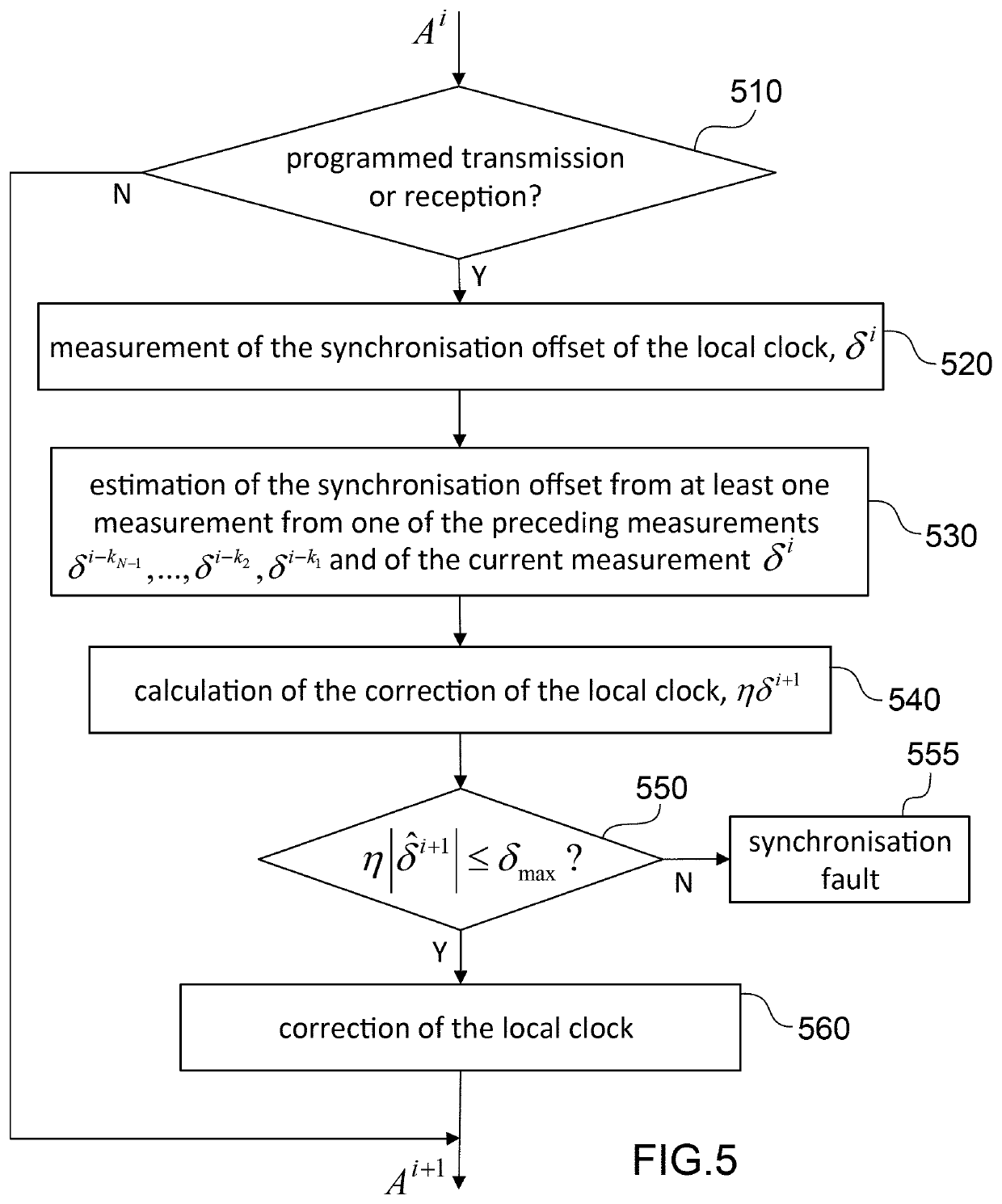Method of synchronizing nodes in a determinist mesh network
- Summary
- Abstract
- Description
- Claims
- Application Information
AI Technical Summary
Benefits of technology
Problems solved by technology
Method used
Image
Examples
Embodiment Construction
[0030]The present invention is defined by a method for synchronising a node in a deterministic mesh network, the access of the nodes of the network to the transmission medium being programmed according to a slotframe split into timeslots, said node being able to communicate with its neighbour nodes during timeslots of the slotframe by using transmission resources, said node being provided with a local clock and measuring the synchronisation offsets of this clock in relation to the local clock of at least one neighbour node by detecting a reception event of a packet transmitted by the neighbour node or of an acknowledgement of a packet transmitted by said node to the neighbour node, said method being original in that said node estimates, from at least one synchronisation offset thus measured, a future synchronisation offset of the local clock for a timeslot following the one for which the last measurement was carried out and corrects its local clock by a correction value equal to a f...
PUM
 Login to view more
Login to view more Abstract
Description
Claims
Application Information
 Login to view more
Login to view more - R&D Engineer
- R&D Manager
- IP Professional
- Industry Leading Data Capabilities
- Powerful AI technology
- Patent DNA Extraction
Browse by: Latest US Patents, China's latest patents, Technical Efficacy Thesaurus, Application Domain, Technology Topic.
© 2024 PatSnap. All rights reserved.Legal|Privacy policy|Modern Slavery Act Transparency Statement|Sitemap



